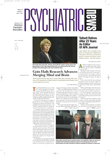The history of the patient safety movement is well known. In December 1994 Lucian A. Leape published the article “Error in Medicine” in the Journal of the American Medical Association that sounded the initial alarm about medical errors and their impact on patient care. This was followed in 1999 by the Institute of Medicine's (IOM) controversial report “To Err Is Human.” The IOM's report stressed that medical errors result primarily from defects in systems and not, as widely believed, from individual human error. This report galvanized organizations, hospitals, and governments across the country to embark on large-scale attempts to improve patient care and safety by reducing medical errors.
A prime example of the response is the National Patient Safety Foundation's (NPSF) four-tiered approach to improving patient safety, proposed in its 1999 annual report. The NPSF called for the following goals:
•
To establish a national focus to create leadership, research, tools, and protocols.
•
To identify and learn from medical errors through mandatory and voluntary reporting.
•
To raise standards and expectations for safety improvement through actions of oversight organizations, group purchasers, and professional groups.
•
To implement safe practices at the delivery level.
Extensive cognitive research has shown us that the two principal, underlying thought processes that result in human error are unintentional actions in the performance of routinized tasks and mistakes in judgment or inadequate plans of action. Specific errors appear to be based on either active failures (that is, errors or violations of rules) or latent failures (that is, errors focused on organizational and systemic processes). Latent failures are considered the most dangerous type of failures, according to James Reason in his book Human Error (Cambridge University Press, 1990).
On the basis of the most recent research, the current patient safety movement has moved away from blaming individuals and has adopted, instead, an approach that focuses on the systems (that is, the polices, procedures, regulations, and technological factors) that contribute to errors. This systems approach allows us to recognize where systems are weak and to develop strategies that prevent potential errors. This design is flexible; it is both proactive and reactive. It is a continuously looping process that involves in-process detection, process change, and process reassessment, according to B. A. Liang in the article “Error in Medicine: Legal Impediments to U.S. Reform,” which appeared in 1999 in volume 24 of the Journal of Health Politics, Policy, and Law.
The risk management process is also a systems approach to supporting patient care. The process consists of five steps: (1) identifying potential risks, (2) evaluating potential risks, (3) choosing a risk management strategy or combination of strategies (that is, accept, avoid, minimize, or transfer risk), (4) implementing the strategy/strategies, and (5) evaluating the effectiveness of the strategy/strategies.
The barriers to implementation of a systems approach to error reduction, either overall error reduction programs or the risk management process specifically, seem to fall into one of two categories: (1) lack of will and (2) concern about legal or disciplinary actions, according to Mark Crane in the article “The Godfather of Patient Safety Sees Progress,” which appeared in the August 8, 2003, issue of Medical Economics.
Lack of will to change the cultural approach to error reduction is partly a result of cultural and organizational inertia, which is itself a systemic problem, and partly because individual error rates are low. As individuals, health care professionals are seldom involved personally with errors that cause harm to patients; therefore, their perceptions may not reflect an accurate appreciation of the scope of the problem.
Concerns about possible legal and disciplinary repercussions for candidly addressing errors are not unrealistic. Plaintiffs' attorneys, licensing bodies, hospitals, and health plan organizations may choose to take unfair advantage of information disclosed during investigations into errors. To protect this information, many state governments have passed peer review statutes that hospitals and facilities are using.
Changing cultural, individual, and group perceptions regarding the approach needed to address patient safety issues successfully will continue to take time and effort. In the meantime, incorporating the risk management process into one's practice can be a valuable tool for improving overall systems and thus improving patient safety. ▪
